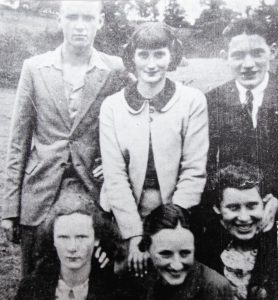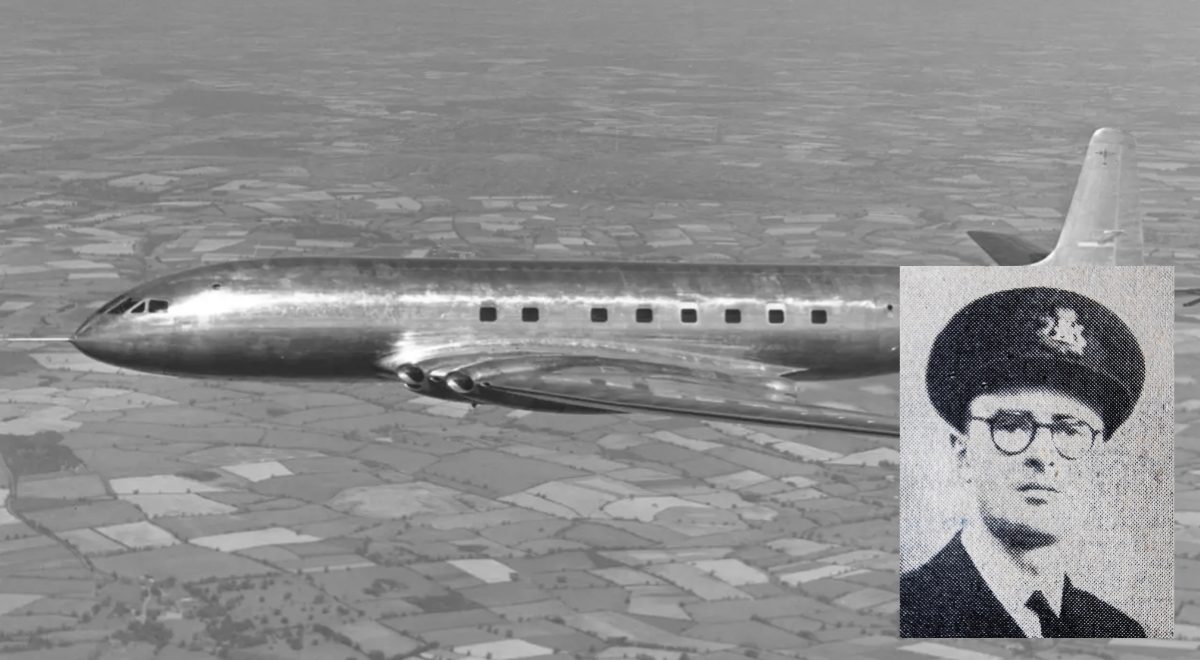This year marks the 70th anniversary of the tragic death of Luke Patrick McMahon, an aspiring aircrew man from Omagh, who perished in one of the first major jet airliner disasters.
The 1950s heralded an exciting era for air travel with post-war technological advancements leading to the creation of the jet-engine commercial airplane by manufacturer, de Havilland in 1952.
Named the Comet, this groundbreaking aircraft offered unprecedented comfort with features like reclining seats, a bar, and large windows.
Luke Patrick McMahon, a 32-year-old pilot officer and radio operator for the British Overseas Airways Corporation (BOAC), was among the first crew members on this feat of modern technology.
Born and raised in the Coolnagard area of Omagh, the former CBS student had a distinguished background, having served in WWII with the merchant navy and worked extensively in air travel since joining BOAC in 1948.

Luke and his family were well known around Omagh: His father was an ex-Royal Irish Constabulary (RIC) before the partition of Ireland and Luke developed his own reputation as a ‘promising, well respected and intelligent man’.
In 1948, he joined BOAC and traversed the globe in various airliners at the ripe young age of 26, but Luke always returned home to Tyrone with a plethora of stories from his travels.
However, unbeknownst to Luke, he would soon become a victim of this experimental technology.
The Comet represented a significant leap forward in aviation technology, but it was not without its challenges.
The aircraft’s design stemmed from the need for a new engine to counter the unexpected developments of Nazi Germany’s Me 262 fighter plane during World War II.
However, by the time the British jet engine was perfected, the war had ended, and the focus shifted to commercial applications.
De Havilland’s experience with jet fighters for the RAF had been fraught with difficulties, including the tragic death of Geoffrey de Havilland Jr in the experimental tailless ‘Swallow’ fighter in 1946. Despite these setbacks, the company pressed on with the development of the Comet.
After five prototypes, the new jet aircraft received its certificate of air worthiness on January 22, 1952, with the first commercial flight commencing on May 2.
Problems
However, soon after its grand launch, the Comet began to encounter problems.
By October 1952, the first crash occurred whilst the Comet was taking off from Rome, resulting in two passengers sustaining minor injuries.
The first fatal crash took place just months later in March 1953, when a Canadian Pacific Airways flight from Karachi in Pakistan also crashed shortly after takeoff claiming 11 lives.
Within a few weeks, 43 people were killed when a Comet crashed in a thunderstorm near Calcutta.
At the time, there was little to no suspicions of manufacturing problems, mainly due to the lack of proper plane crash investigations at the time.
However, on January 10, 1954, Luke and his crewmates, Captain Alan Gibson, First Officer William John Bury and Engineer Officer Frances Charles McDonald, took off from Ciampino Airport, Rome, Italy, at 9.30am, heading back to Heathrow Airport in London.
Around 20 minutes later, after the Comet reached cruise altitude, Captain Gibson was conversing by radio with another BOAC flight when his transmission cut off mid-sentence.
Nothing more was heard but the ill-fated flight never reached its destination.
The first reports of an accident came from fishermen in the Mediterranean who witnessed the plane explode mid-air and fall into the sea.
The men attempted to recover the victims but by that stage any bodies found displayed injuries from the explosion.
In total, 35 passengers, including ten children and the crew of six, were killed.
The wreckage was then located on February 12 and it was apparent that the airliner had broken up mid-flight. Initial investigations pointed to the possibility of a bomb having been placed aboard, or that an unstable jet engine failure had penetrated the pressurised cabin, resulting in a structural failure of the fuselage through explosive decompression.
Investigators eventually concluded that the Comet had suffered from metal fatigue, a result of the repeated cycles of pressurisation and depressurisation. The aircraft that Luke McMahon operated had logged 3,681 flying hours and over 1,200 pressurisation cycles since January 1951, making it particularly susceptible to this flaw.
Luke’s remains were returned to Omagh, where he was buried with full honours at the Sacred Heart Chapel and Dublin Road Cemetery. His funeral was attended by representatives from BOAC, Aer Lingus, and the Omagh Urban Council.
One tribute described Luke as one of the most promising, finest, and intelligent young men Omagh had produced for a number of years,” adding that his family was, “Well known and respected by every member of the community.”
The Comet fleet was briefly grounded after the fatal flight as the investigation continued. Despite the findings on metal fatigue, the Comet was allowed to fly again in March 1954.
Tragically, another crash claiming 21 lives occurred just a month later, prompting another grounding of the aircraft.
It was not until 1958, with the introduction of the redesigned Comet 4 and 4B, that the aircraft returned to to the skies for commerical flights.
The Comet remained in service with BOAC until 1965 and then with Dan Air until 1980.
The lessons learned from its failures led to significant advancements in aircraft design and safety standards.







